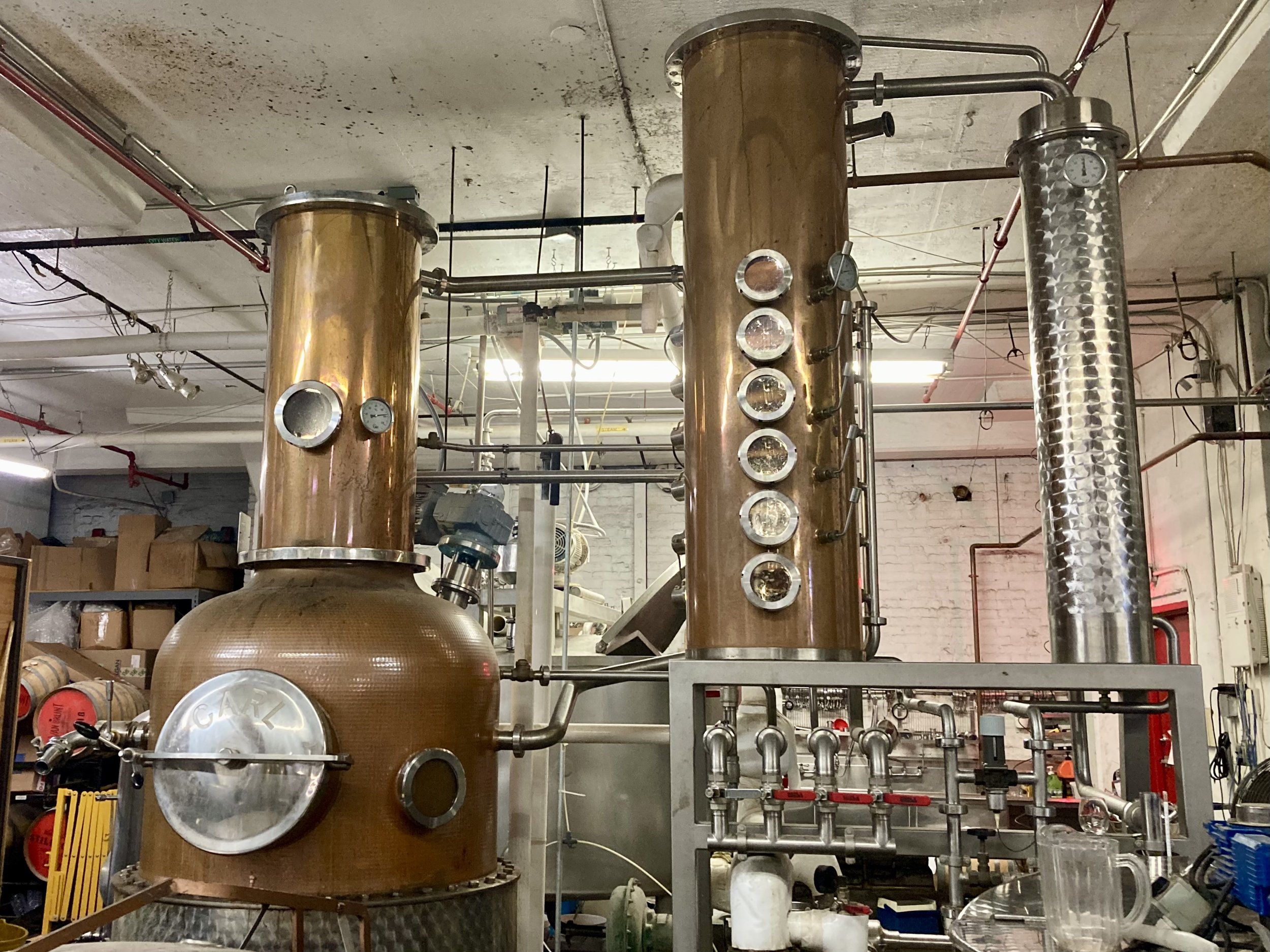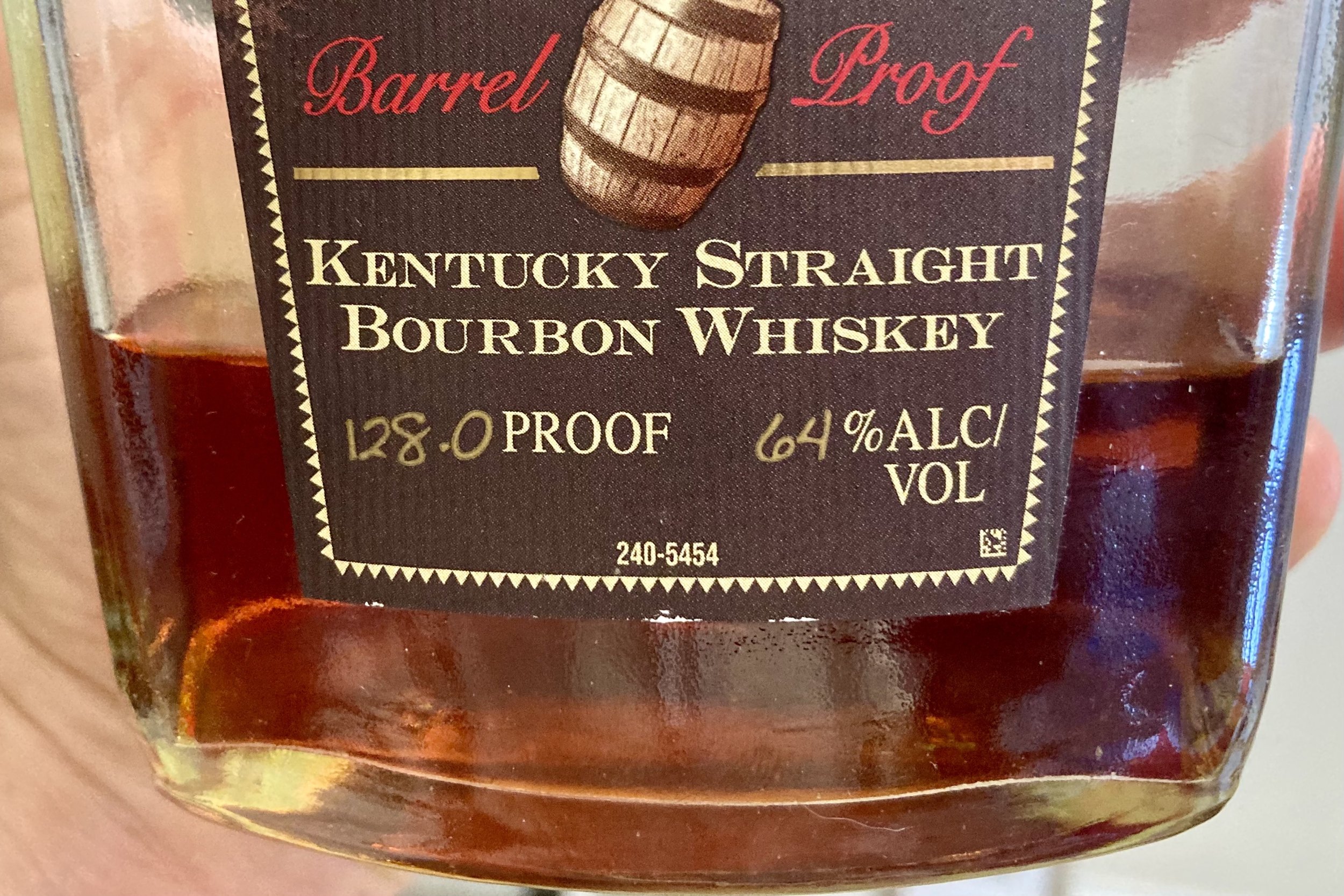A Visit to Van Brunt Stillhouse
An amazing farm distillery located in an industrial neighborhood of Brooklyn.
Believe it or not, my beach-bum self used to live in NYC and recently I traveled back to the east coast for a friends’ wedding. It seemed like forever since I had actually adventured through the city (pre-COVID was forever ago, right?), so I wanted to take full advantage of what little time I had. Besides strolling through Central Park with a bagel and a dirty chai, I wanted to visit at least one distillery. There are many notable distilleries in NYC now.
Some of them popped up around 10 years ago and more have continued to open throughout the city. Kings County Distillery has been operating in the Brooklyn Navy Yard since 2012 making a variety of whiskeys in-house using mostly local grains. They originally started with moonshines (unaged whiskeys) and flavored whiskeys, but now have added various bourbons, single malt and empire rye to their lineup. Around the same time Widow Jane Distillery started blending mature bourbons and ryes in Redhook while their own heirloom variety bourbons aged. I can remember discussing the flavor profile differences of their first and second batches of 10 year old bourbon with my favorite sales guy at my favorite local liquor store so many years ago.
Van Brunt Stillhouse, also located in Redhook on Van Brunt St, is a farm distillery that just celebrated their 10 year anniversary. They source their grains from local NY farms, which is how they maintain the farm distillery classification in a very industrial neighborhood in Brooklyn. I was able to try a couple of their products this past August when I was in upstate NY for my sister’s wedding. I noticed a few expressions of Van Brunt’s whiskeys at the restaurant hosting the rehearsal dinner and really enjoyed the ones I tried. So Van Brunt was the distillery I chose to visit during my latest trip to NYC. And I’m so glad I did!
Except for the sign on the door, you wouldn’t immediately know that there was a distillery inside this weathered brick building. But as soon as you walk up the stairs, you get the familiar smells of cooked grains that let you know that good whiskey is made here. Dead ahead is the production floor, packed tight with stacked pallets of barrels of varying sizes and to the right is the cozy and rustic tasting room.
We started with a tour of the production floor and spent a lot of time in front of the pot still. The founder and distiller, Daric was running the still during our tour and no matter how many times I’ve seen (or done) a distillation, I love getting to see the still in action. Although it looks like the still’s name is CARL, that’s actually the German fabrication company that made it. The copper pot still feeds into a 5-plated column on the side to increase separation during distillation. The site glasses on the column allow you to watch the spirit reflux and if you haven’t seen this before, it looks like rain!
After we completed our tour, we headed to the tasting room and tasted four of their whiskeys. The first that we tasted was their American Whiskey, which was also the first product Van Brunt released. The mashbill consists of mostly wheat and barley with supporting roles played by corn and rye. This whiskey was grain forward, like whole wheat seeded bread, with notes of orange and candied lemon, toffee, cinnamon stick, milk chocolate and some light dried fruits on the nose. On the palate it immediately tasted of fig newtons with rich, malted chocolate, orange zest, pumpernickel bread, vanilla and orange marmalade notes.
The whiskey doesn’t fall under any specific whiskey category like bourbon, rye, malt or wheat whiskey because none of the grains make up the majority of the mash. According to Daric this made it difficult to sell the American Whiskey because bars and liquor stores didn’t know how to categorize it. So he made the decision to produce a bourbon. And that was the second whiskey we tasted. I recall this reminding me instantly of an Italian sub! It might sound crazy, but I was getting Italian herb bread with salami, turkey, pepperoni and provolone cheese topped with lettuce, tomato, banana peppers and pickled jalapeno. I think this was somehow related to tasting the bourbon after tasting the American whiskey. It’s amazing how easily impacted your palate can be! (Ex: Have you ever drank orange juice after brushing your teeth?)
Van Brunt places a lot of emphasis on the grains that they use in their mashbills. Instead of using distiller’s malt, which adds amylase enzymes (necessary to convert starches to fermentable sugars) and minimal flavor, they use a variety of malts. This is more common in brewing rather than distilling. Brewers use different malts depending on the style of the beer they're making, but whiskey is essentially distilled beer and a lot of the grain flavors are stripped out during distillation. Most of the flavors in whiskey come from how it’s aged. This means the emphasis in the whiskey mash tends to fall towards potential ethanol yield rather than flavor development. However, using a variety of brewers' malts adds fun, grain-derived characteristics to the whiskeys that we’re now starting to taste more and more in craft whiskeys. Van Brunt was just ahead of their time.
Van Brunt was also the first adopter of the Empire Rye category. Just like American Single Malt, the Empire Rye category is not yet defined by the US Alcohol and Tobacco Tax and Trade Bureau (TTB), but rather is protected by the Empire Rye Whiskey Association. Six NY distilleries came together in 2015 and founded the Empire Rye Whiskey Association with the goal of creating a distinctive product of NY state. They define Empire Rye as whiskey produced entirely by one distillery in NY state with a mash-bill of at least 75% NY grown rye, distilled to a maximum strength of 80% ABV and aged at least 2 years in new charred oak barrels with a maximum barrel entry proof of 115 (57.5% ABV). Van Brunt uses 75% Danko rye grown in the Finger Lakes Region for their Empire Rye mash along with 25% malted barley then ages it for 2 years.
The Empire Rye is what we tasted next. This was decadent with notes of dried fruit, salted caramel, nutmeg, clove and chocolate covered almonds on the nose. The palate had a great mouthfeel with notes of prunes, cacao nibs, raisinettes, swiss miss hot chocolate with toasted marshmallows and bitter caramel. On the other end of the rye spectrum was the White Rye that we tasted as our final whiskey. As the name suggests, this rye is very light in color because it was only “rested” for 4 months in ex-Empire Rye casks. They refer to this as their rye reposado as a nod to reposado tequila and it is aptly nicknamed. It was very light, fruity and had some classic herbal and spicy notes that rye is known for.













